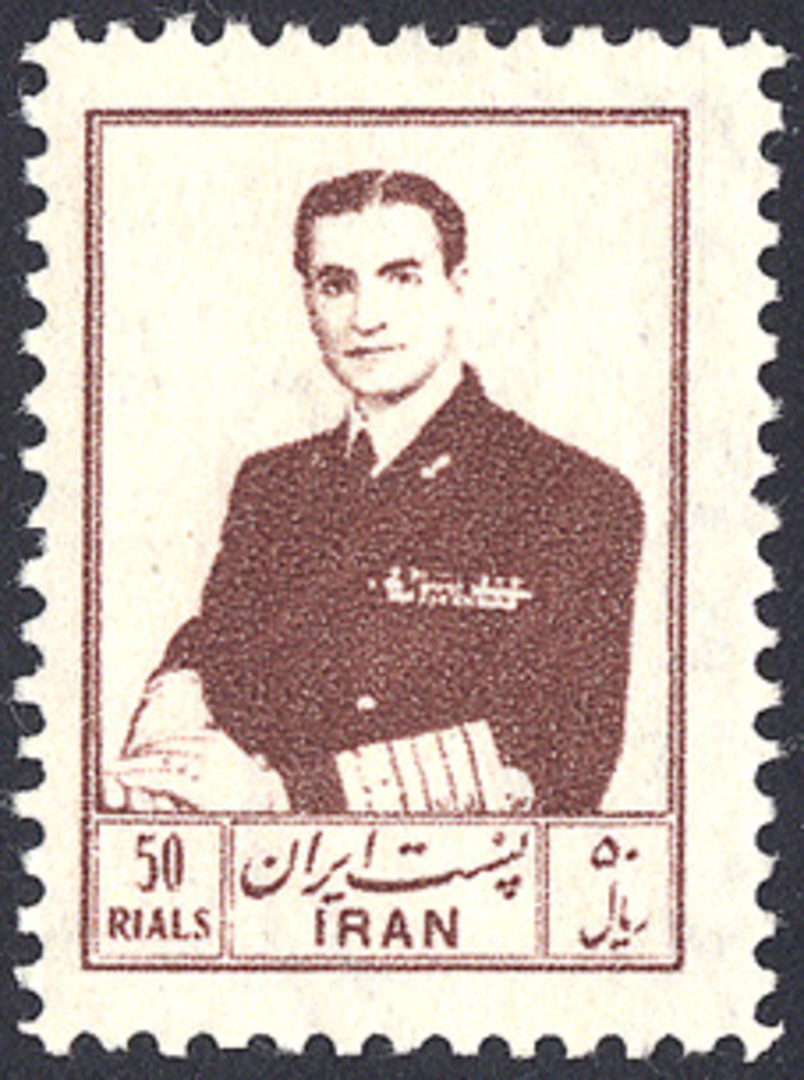The Last Shah of Persia
The '2,500 year Celebration of the Persian Empire' (October 12th – 16th, 1971), took place on the occasion of the 2,500th anniversary of the founding of the Iranian monarchy by Cyrus the Great. This was probably the pinnacle of both achievement and ostentation, towards the end of the controversial reign of Mohammad Reza Pahlavi, the last Shah of Iran.
Mohammad Reza Shah Pahlavi, (1919–1980), ruled Iran from 1941, until his overthrow by the Iranian Revolution in February 1979. He was the second and last monarch of the House of Pahlavi of the Iranian monarchy. Pahlavi came to power during World War II, after an Anglo-Soviet invasion forced the abdication of his father Reza Shah, who was considered too close to the Axis counties. His 'White Revolution' (a counter to the growing regional menace of Communism) – a series of economic and social reforms intended to transform Iran into a global power – succeeded in modernising the nation, nationalising many natural resources, including the foreign owned oilfields and extending suffrage to women. A Secular Muslim himself, the Shah gradually lost support from the Shi'a clergy of Iran, mainly due to his strong policy of modernisation, secularisation and recognition of the State of Israel. Clashes with the Islamists, increased communist activity and in 1953 a period of political disagreements with Mohammad Mosaddegh, his Prime Minister. This eventually lead to Mosaddeq's ousting, which was caused by the Shah's opponents to overthrow his government, thus sending the Shah into his first period of exile.
The Shah fled to Baghdad, then Rome, but after a brief exile in Italy, returned to Iran, as a result of a successful counter coup. The deposed Prime Minister Mosaddegh was arrested, tried and sentenced to one and a half years imprisonment. Zahedi was then installed as the new Prime Minister.
Prone to indecision, however, Mohammad Reza relied more on manipulation than on leadership, to continue in power. With US help, he concentrated on rebuilding the armed forces, ensuring that they would remain under royal control as the monarchy's main power base.
In the context of regional turmoil and the Cold War, the Shah established himself as an indispensable ally of the West. Domestically, he advocated reform policies, culminating in the 1963 program known as the White Revolution. This included land reform, the extension of voting rights to women, and the elimination of illiteracy.
In 1967, he crowned himself as King of the Kings (Emperor of Iran), and his wife, Farah Diba, as Shahbanoo (Empress); this was a move which caused discontent amongst many different levels of society. These measures and the increasing arbitrariness of the Shah's rule provoked both religious leaders. They feared losing their traditional authority and students and intellectuals seeking democratic reforms. These opponents criticised the Shah for violation of the constitution, which placed limits on royal power and provided for a representative government, and for subservience to the United States. In 1976, he replaced the Islamic calendar with an 'imperial' calendar, which began with the foundation of the Persian Empire, more than 25 centuries earlier. These actions were viewed as anti-Islamic and resulted in fundamentalist religious opposition.
Relying on oil revenues, which sharply increased in late 1973, the Shah pursued his goal of developing Iran as a mighty regional power, dedicated to social reform and economic development. Yet he continually sidestepped democratic arrangements, and refused to allow real civic and political development and freedom, using the notorious SAVAK (secret police) to round up and imprison his enemies and detractors.
By the mid-1970s, the Shah reigned amidst widespread discontent, caused by the continuing repressiveness of his regime. Socio-economic changes that benefited some classes at the expense of others, and the increasing gap between the ruling elite and the disaffected populace, led to a schism in the general society. Poverty was widespread, and yet the ruling elite lived in visible ostentatious luxury. Islamic leaders, particularly the exiled cleric Ayatollah Khomeini, were able to focus this discontent with a populist ideology tied to Islamic principles and calls for the overthrow of the Shah. The Shah's government collapsed following widespread uprisings in 1978 –1979, and consequently an Islamic Republic succeeded his regime.
In January 1979, the Shah once again left Iran to begin life in exile. He lived in Egypt, Morocco, the Bahamas, and Mexico, before going to the United States for treatment of lymphatic cancer. His arrival in New York City led to the Iranian Government demanding his return to face trial, but the US Government flatly refused, resulting in the takeover of the American Embassy in Tehran (50 hostages held for 444 days) by "Students of Imam's Line", the so called "Teheran Hostage Crisis" causing a complete breakdown in the relationship between both countries which still persists today.

 General
General
 General
General
 General
General